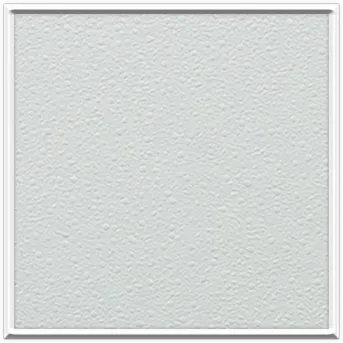Dec . 10, 2024 03:02 Back to list
Ceiling T Bar Hangers for Secure and Efficient Installation Solutions
Ceiling T-Bar Hangers An Essential Guide for Suspended Ceilings
Ceiling T-bar hangers play a critical role in the construction and installation of suspended ceilings. These structures are not only functional but also enhance the aesthetic appeal of indoor spaces. In this article, we will explore the purpose and importance of T-bar hangers, their installation process, and best practices to ensure a durable and secure ceiling system.
Understanding T-Bar Hangers
T-bar hangers are metal brackets designed to support the grid system of suspended ceilings. They typically comprise a T-shaped profile that serves as a framework for attaching ceiling tiles. The grid system distributes the weight of the ceiling tiles evenly, providing stability and support. The T-bar hanger allows for vertical adjustment, which is necessary for aligning the grid with the desired ceiling height.
Why are T-Bar Hangers Important?
The significance of T-bar hangers extends beyond mere support; they contribute to the overall functionality of the ceiling system. A well-installed suspended ceiling can improve acoustic performance, energy efficiency, and even fire safety. T-bar hangers enable the ceiling to absorb sound, minimizing noise transmission between spaces. Moreover, they accommodate lighting fixtures, HVAC systems, and other mechanical components seamlessly, maintaining both form and function.
Installation Process
Installing T-bar hangers requires careful planning and precision. Here are the essential steps to ensure a successful installation
1. Planning and Layout Before installation, it is crucial to measure the room dimensions and design the layout of the ceiling grid. This planning phase will dictate the number and placement of T-bar hangers. A well-thought-out layout helps in reducing material wastage and ensures a uniform presentation.
2. Gathering Materials In addition to T-bar hangers, gather other required materials, including T-bar grid systems, ceiling tiles, anchors, and suspension wires. Ensure that all materials comply with local building codes.
ceiling t bar hangers

3. Marking the Installation Points Using a chalk line or laser level, mark the ceiling to indicate where the T-bar hangers will be placed. Maintaining level lines is critical for the overall aesthetic of the ceiling.
4. Installing the Hangers Attach the T-bar hangers to the ceiling joists or structural supports using suitable anchors and screws. It is essential to secure them properly to handle the weight of the ceiling structure and any additional fixtures.
5. Assembling the Grid Once the T-bar hangers are in place, connect the T-bars to form the grid layout. Ensure that the grid is level and properly aligned according to the initial markings.
6. Inserting Ceiling Tiles After the grid is securely in place, insert the ceiling tiles into the openings of the T-bar system. Check for any gaps or misalignments, making adjustments as necessary.
Best Practices for T-Bar Hanger Installation
To ensure the longevity and functionality of suspended ceilings, consider the following best practices
- Use Quality Materials Investing in high-quality T-bar hangers and grid components will enhance the overall durability of the ceiling system. - Follow Manufacturer Guidelines Always adhere to the manufacturer's installation instructions and local building codes to ensure compliance and safety.
- Routine Inspections Periodically inspect the suspended ceiling for any signs of wear, sagging, or damage. Addressing issues promptly can prevent larger problems in the future.
Conclusion
Ceiling T-bar hangers are essential components in the construction of suspended ceilings. They provide the necessary support and alignment for grid systems, allowing for a variety of functional and aesthetic enhancements. Whether in a residential or commercial space, understanding the importance of T-bar hangers and following proper installation techniques will lead to a successful and enduring ceiling solution. By prioritizing quality materials and best practices, you can ensure that your suspended ceiling meets both practical needs and design aspirations.
-
Durable Ceiling T Grid Systems | Easy InstallationNewsAug.29,2025
-
PVC Gypsum Ceiling: Durable, Laminated Tiles for Modern SpacesNewsAug.28,2025
-
Pvc Gypsum Ceiling Is DurableNewsAug.21,2025
-
Mineral Fiber Board Is DurableNewsAug.21,2025
-
Ceiling Tile Clip Reusable DesignNewsAug.21,2025
-
Ceiling T Grid Modular DesignNewsAug.21,2025







